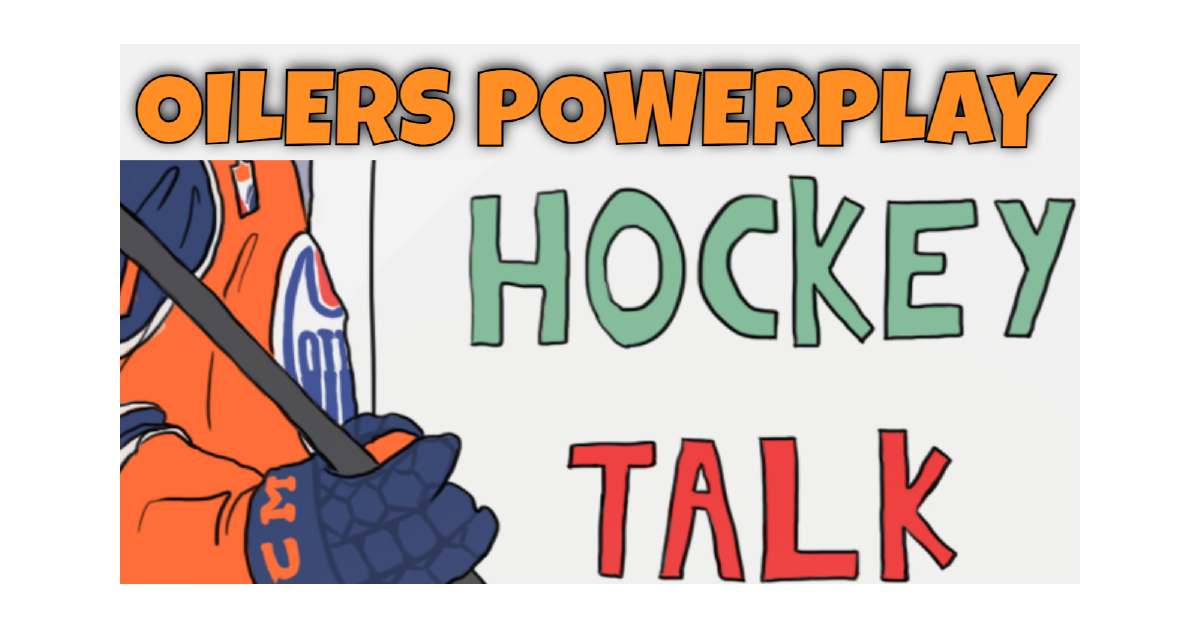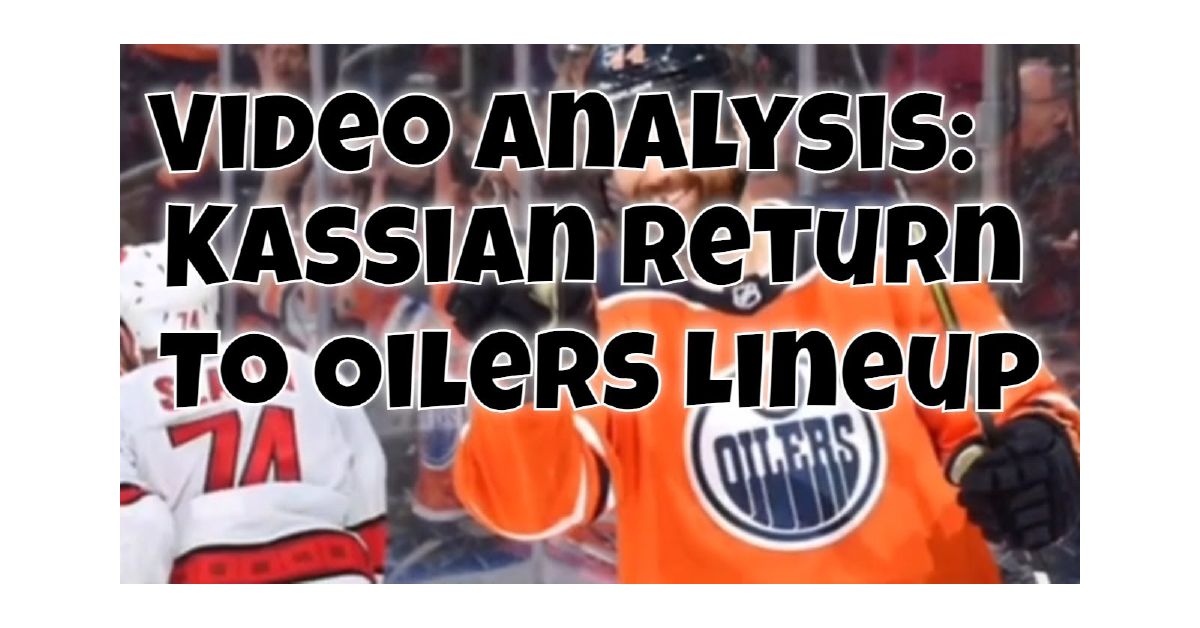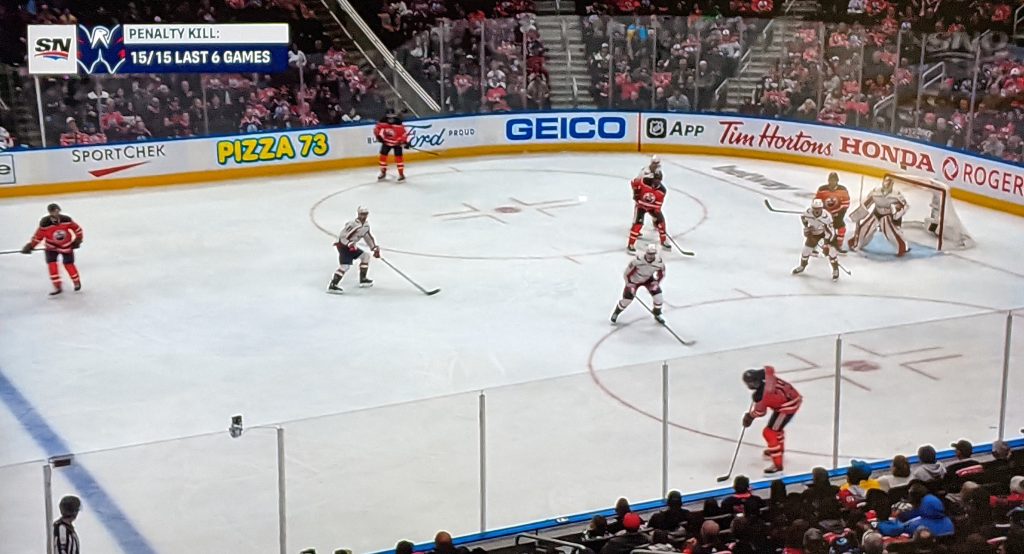
VIDEO ANALYSIS: Oilers Powerplay
March 9, 2022
VIDEO ANALYSIS: Zack Kassian returns to Edmonton Oilers Lineup
March 11, 2022Minor adjustments that could revive the Oilers power-play

EDMONTON, AB - OCTOBER 19: Edmonton Oilers Left Wing Leon Draisaitl (29) celebrates is 200th goal in the first period during the Edmonton Oilers game versus the Anaheim Ducks on October 19, 2021 at Rogers Place in Edmonton, AB. (Photo by Curtis Comeau/Icon Sportswire)
March 11, 2022 by Ryan Lotsberg
Our very own Josh Boulton (@ToughCallPodcast) made a video that outlined the Oilers’ recent struggles on the power-play. No power-play with Connor McDavid and Leon Draisaitl should ever struggle. It’s unfathomable that the power-play has been as bad as it has been lately after having watched the same group operate at such a prolific rate early in the season.
Here are my thoughts on why they have struggled so much recently and why the results started to shift in Wednesday’s victory over the Capitals.
Before anything else can happen, they have to get possession in the offensive zone. That has proven to be a challenge for them in too many games lately. The Montreal game was a great example of that. The Oilers love to use the play where they pass the puck back to McDavid in his own zone and he carries it through the neutral zone.
Being aggressive at the blue line is a smart way to defend the Oilers’ entry on their powerplay because McDavid is the only skater that isn’t standing still when the puck enters the zone. The way to beat pressure at the blue line is to dump the puck into the zone and win the race. It’s hard to win a race in the NHL when you start from a stand still. The defending team either creates a turnover at their blue line or slants the odds of recovering a dump into the zone strongly in their favour by defending the blue line aggressively against that entry. Teams like Montreal that attack the Oilers at or near the blue line are quite successful against their power-play.
The picture below shows a great angle of the Oilers power-play during their 6-0 loss to the Panthers on January 20.

The picture above is a perfect illustration of the problem with the Oilers power-play. The predictability of McDavid passing it across the seam to Draisaitl has made their powerplay easy to defend.
McDavid skated down the left side with the puck. He’s incredibly dangerous in that situation. However, look at his head and his stick. The only thing he was thinking about was Draisaitl waiting for the one-timer at the faceoff dot. Draisaitl was waiting for it because that’s what McDavid has tried to do so often this season.
Draisaitl has a lethal shot from that position. The problem is that everyone in the league knows that McDavid wants that pass to Draisaitl. The Panthers defended it easily by forming a tight box in the slot. Look at how much traffic that puck had to find its way through before getting to Draisaitl. Jonathan Huberdeau and Eetu Luostarinen were both in the passing lane. Even if that pass would’ve somehow miraculously made its through that traffic and connected with Draisaitl, it would’ve been easy enough for Matthew Kiersted to step over and block Draisaitl’s shot.
Draisaitl positions himself near the bottom of the faceoff circle quite often. That cross-seam pass to Draisaitl is a low percentage play when he’s standing at the hash marks. That pass is made even more difficult when Draisaitl positions himself at the bottom of the faceoff circle because the Oilers’ bumper player and the defenceman on Draisaitl’s side then become more obstacles for the puck to have to avoid.
The Oilers’ bumper player positions himself at the hash marks or lower in the slot to create the seam for McDavid to make that pass to Draisaitl. They also have a player positioned in front of the net. If Draisaitl is positioned at the faceoff dot or at the bottom of the circle, that means that the three biggest threats to score off of a pass from McDavid are all covered because that spacing compresses the defence in the slot. It eliminates all of the dangerous passing options for McDavid from the left side. It severely limits their ability to make plays.
I noticed a small adjustment in the few moments where the Oilers did gain possession in the offensive zone on the powerplay against Montreal. Draisaitl started to position himself above the faceoff circle. The result was that the Oilers had more space to pass the puck through, and they managed to generate some good chances.
That continued in the game against Washington. Look at this picture from the Oilers’ first powerplay of the game on Wednesday.

Draisaitl had the puck above the faceoff dot. Look at how much more space they had! They didn’t score on that opportunity, but McDavid found Yamamoto for a back door tap-in on a powerplay later in the game because they had space to use.
It all starts with how high Draisaitl positions himself because he’s the trigger man. If he’s too low, then the defence can just collapse into the slot and cover that pass. If Draisaitl is positioned higher in the zone, then the Oilers get more space, which allows them to create different opportunities for themselves.
The big thing that was happening at the start of the season that was missing for so long was creating chances off of broken plays. The Oilers would win races to loose pucks after missed shots or blocked passes, and they would create all kinds of chances. That didn’t happen often after the team’s hot start.
That was happening during their powerplay opportunity in the third period against Washington. They were taking shots instead of trying to force passes to Draisaitl, and they created chaos for the Capitals. They would’ve scored if not for two incredible right pad saves by Ilya Samsonov on Evander Kane on that powerplay.
The best time for Draisaitl to sneak down below the faceoff dot to look for his shot is when there’s chaos on a broken play. If he camps there, then the Oilers have no space to make plays because the defence collapses in the slot. If he can sneak there at the right moments, then he can be dangerous.
A power-play with McDavid and Draisaitl can’t be bad forever. They will get it going again. Hopefully the small adjustment to have Draisaitl positioned above the faceoff dot leads to some consistent success down the stretch.

